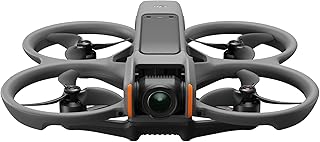DJI Drone Battery Life: Maximizing Your Flight Time
Your DJI drone's battery is its lifeline, determining how long you can explore the skies. Understanding and optimizing battery life is crucial for maximizing your aerial adventures. Here's a comprehensive guide to achieving the best possible flight times with your DJI drone:
1. Understand Your Drone's Battery Capacity:
* Battery type: DJI drones use proprietary lithium-polymer batteries.
* Capacity (mAh): This indicates how much power the battery stores. Higher mAh = longer flight time.
* Voltage: The voltage determines the power output. Typically, higher voltage = higher power consumption, but also higher performance.
* Check your manual: Refer to your drone's user manual for specific battery information, including capacity and recommended flight time.
2. Factors Affecting Battery Life:
* Flying Conditions:
* Temperature: Cold weather significantly reduces battery performance. Ideal temperatures are typically between 10��C and 35��C (50��F and 95��F).
* Wind: Strong winds increase power consumption, shortening flight time.
* Altitude: Flying at higher altitudes can also reduce flight time.
* Flight Style:
* Aggressive maneuvers: Rapid ascents, descents, and high-speed flying consume more battery power.
* Camera use: Recording videos and taking photos drains the battery faster, especially with high-resolution settings and advanced features.
* Drone Model: Different drone models have varying battery capacities and power consumption rates.
3. Maximizing Flight Time:
* Use a Fully Charged Battery: Always ensure your battery is fully charged before flying.
* Pre-Flight Battery Warming (Cold Weather): If flying in cold weather, warm the battery to room temperature before flying.
* Fly Smoothly: Avoid aggressive maneuvers and abrupt changes in altitude. Fly smoothly and efficiently.
* Minimize Camera Use: Reduce camera usage when possible, or use lower-resolution settings.
* Optimize Camera Settings: Use the appropriate settings for your filming or photography needs without overusing high-resolution options.
* Fly in Calm Conditions: Minimize wind resistance by flying in calmer conditions, especially when possible.
* Avoid Over-Exertion: Don't push the drone to its limits in terms of altitude, speed, or aggressive maneuvers.
* Land Early: Land your drone with some battery left to ensure a safe landing.
4. Battery Management Tips:
* Store Batteries Properly: Store batteries in a cool, dry place away from direct sunlight and heat sources.
* Charge Batteries Regularly: Don't let batteries sit completely discharged for extended periods. Charge them regularly, even if not used.
* Avoid Overheating: Don't leave batteries in direct sunlight or in hot environments.
* Use DJI Battery Charging Hub: Use the recommended DJI charging hub for optimal charging and management.
* Replace Batteries When Needed: Batteries have a limited lifespan. Replace them when they show signs of reduced capacity or performance.
5. Additional Tips:
* Use Multiple Batteries: Bring extra batteries for extended flights.
* Plan Your Flight: Plan your flight path to minimize travel time and unnecessary maneuvering.
* Monitor Battery Level: Always keep an eye on the battery level indicator. Land before the battery gets too low.
By following these tips, you can significantly increase your DJI drone's flight time and enjoy more extended aerial adventures. Remember, responsible and safe drone operation is crucial, so always prioritize battery management and flight safety.


